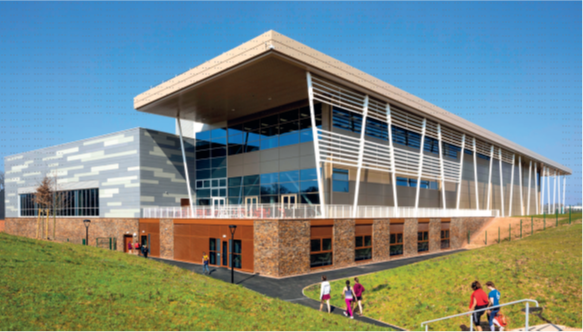Achieving net zero emissions by 2050 is the Government’s aim, so how do construction companies get there? Francesca Wilkinson, assistant environment manager at Willmott Dixon, explains how its Energy SynergyTM consultancy can help

WILLMOTT Dixon’s Energy SynergyTM consultancy service grew out of the contractor's experience delivering Passivhaus schemes. The contractor’s work as a founding member of the UK’s Passivhaus Trust to deliver schemes such as the George Davis Centre at the University of Leicester highlighted the requirement for better energy prediction and monitoring in use, to help the contractor and its customers to fully achieve the best building performance benefits.
Contractors normally deliver projects to theoretical predicted energy standards (EPCs). However, buildings rarely meet these. CIBSE has recently estimated that completed projects can consume two to five times more energy than estimated at the design stage, with a significant proportion of this coming from unregulated energy uses such as fit-out equipment and IT systems.
Collaboration is key: Energy SynergyTM sees Willmott Dixon work closely with its customers from the inception of a project, throughout the build process to completion and beyond – delivering assured building performance based on real-life measures.
The Willmott Dixon team then works with its customers once they have occupied a building, gathering detailed and ongoing performance data. This is then compared to the modelled energy performance over a two-to-three-year period post-completion, allowing the team to truly understand how a building is performing and how it differs from the assumptions made during design.
An example of what the service can do is its work on the University of Warwick Sport and Wellness Hub.
Since its completion, the £37m Hub has played a pivotal role in supporting the university’s ambition of becoming the “most physically active campus community in the UK”, having replaced all former on-campus health and fitness facilities. The University has also committed to achieving net zero carbon across its activities by 2030 for direct emissions and is actively progressing plans to achieve this.
Opening its doors in 2019, this 40,000 sqm, state-of-the-art facility boasts 15,500 sqm of indoor space, including: a multi-functional sports hall; the biggest gym in the higher education sector; a 25m-long, 12-lane swimming pool; 17m-high indoor climbing walls; fitness suites; and squash courts. User comfort and reconfiguration of the space were at the heart of the project and it has benefited from smart climate controls and user customisation technologies. These include coolant technology to provide the right temperature for any given sport and automatically adjusted lighting in key rooms to create the optimal ambience at the touch of a button.
Lisa Dodd-Mayne, director of sport and active communities at the University of Warwick, said: “By working collaboratively from the preconstruction stages of the project, through to Willmott Dixon’s post-completion innovative Energy Synergy service, our objectives and aims for the development have been exceeded every step of the way. Willmott Dixon’s specialist energy consultancy has not only given us excellent visibility and certainty over the running costs of the development, but it has also allowed us to address sustainability challenges at every stage and really get the best possible performance out of our state-of-the-art facility.”
By offering specialist in-house energy efficiency consultants, who accurately estimate the energy consumption of projects during the design process, as well as monitoring during occupancy to suggest improvements, and by just making marginal energy changes at the facility, Willmott Dixon was able to save the university more than £40,000 and a carbon saving of 98.5 teCO2e within its first year of operation.